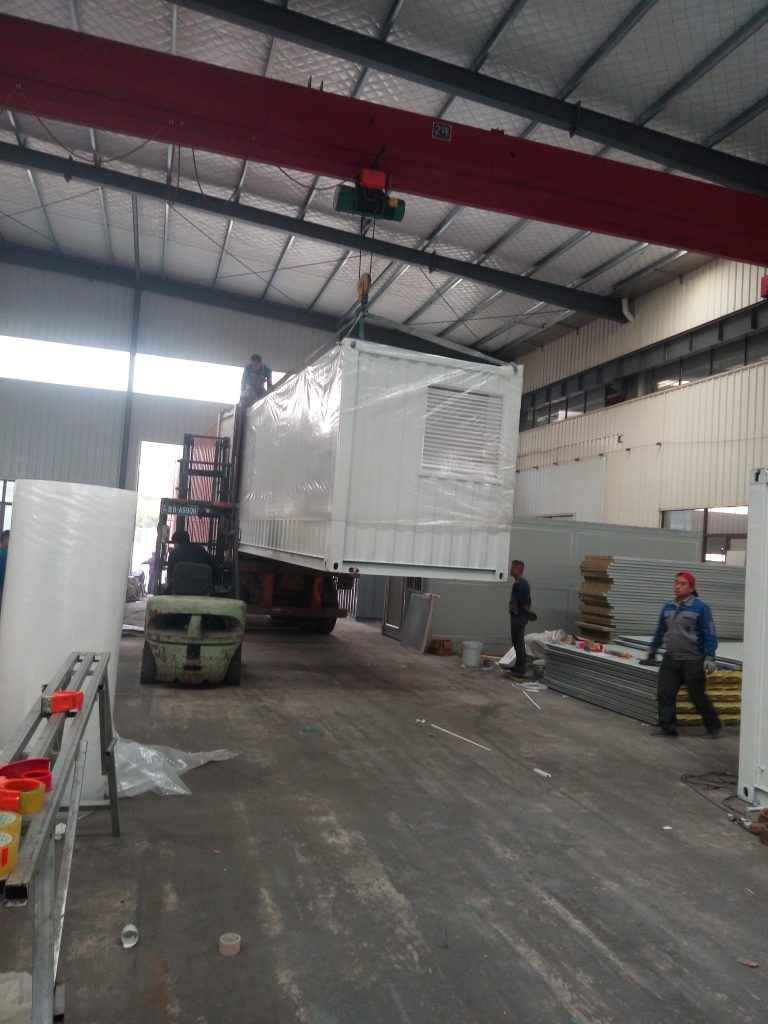To discuss the environmental protection materials and sustainable utilization strategy of steel structure box room in temporary scientific research and experiment facilities.
Inhoudsopgave
Environmental Protection Materials for Steel Structure Box Rooms in Temporary Scientific Research Facilities
Steel structure box rooms are commonly used in temporary scientific research and experiment facilities due to their durability and versatility. However, the construction and utilization of these structures can have a significant impact on the environment if not done responsibly. In order to minimize the environmental footprint of steel structure box rooms, it is important to use environmentally friendly materials and implement sustainable utilization strategies.
One of the key considerations when constructing steel structure box rooms is the choice of materials. Traditional construction materials such as concrete and wood can have a negative impact on the environment due to their high carbon footprint and non-renewable nature. In contrast, using environmentally friendly materials such as recycled steel and sustainable wood products can help reduce the environmental impact of steel structure box rooms.
Recycled steel is an excellent choice for constructing steel structure box rooms as it reduces the demand for new steel production, which is a major source of carbon emissions. Additionally, using recycled steel helps divert waste from landfills and promotes a circular economy. Sustainable wood products, such as bamboo and reclaimed wood, are also good alternatives to traditional wood products as they are renewable and have a lower environmental impact.
In addition to using environmentally friendly materials, implementing sustainable utilization strategies is essential for reducing the environmental impact of steel structure box rooms. One such strategy is designing the box rooms to be energy efficient. This can be achieved through proper insulation, energy-efficient lighting, and the use of renewable energy sources such as solar panels.
Another important aspect of sustainable utilization is water conservation. Implementing water-saving fixtures and systems, such as low-flow toilets and rainwater harvesting, can help reduce water consumption in steel structure box rooms. Additionally, using water-efficient landscaping techniques can further minimize water usage and promote biodiversity.
Waste management is also a critical component of sustainable utilization. Implementing a waste reduction and recycling program can help minimize the amount of waste generated by steel structure box rooms. Proper disposal of hazardous materials and recycling of construction waste can further reduce the environmental impact of these structures.
Furthermore, incorporating green building practices into the design and construction of steel structure box rooms can help enhance their environmental performance. Green building practices focus on maximizing energy efficiency, minimizing waste, and promoting indoor air quality. By incorporating these practices, steel structure box rooms can become more sustainable and environmentally friendly.

In conclusion, the construction and utilization of steel structure box rooms in temporary scientific research and experiment facilities can have a significant impact on the environment. By using environmentally friendly materials such as recycled steel and sustainable wood products, and implementing sustainable utilization strategies such as energy efficiency, water conservation, waste management, and green building practices, the environmental footprint of steel structure box rooms can be minimized. It is essential for designers, builders, and facility managers to prioritize environmental protection and sustainability in order to create a more sustainable future for temporary scientific research facilities.
Sustainable Utilization Strategy for Steel Structure Box Rooms in Temporary Experiment Facilities
Steel structure box rooms are commonly used in temporary scientific research and experiment facilities due to their durability and versatility. However, the environmental impact of these structures cannot be ignored. In this article, we will discuss the environmental protection materials and sustainable utilization strategy for steel structure box rooms in temporary experiment facilities.
One of the key considerations when it comes to environmental protection in steel structure box rooms is the choice of materials. Using sustainable materials such as recycled steel and environmentally friendly coatings can help reduce the carbon footprint of these structures. Additionally, incorporating energy-efficient features such as insulation and solar panels can further minimize the environmental impact of steel structure box rooms.
Another important aspect of environmental protection in steel structure box rooms is waste management. Proper disposal of construction waste and recycling of materials can help reduce the amount of waste that ends up in landfills. Implementing a waste management plan that includes sorting and recycling materials can significantly reduce the environmental impact of steel structure box rooms.
In addition to using environmentally friendly materials and managing waste effectively, sustainable utilization strategies are also crucial for minimizing the environmental impact of steel structure box rooms. One such strategy is to design the box rooms in a way that maximizes natural light and ventilation, reducing the need for artificial lighting and air conditioning. This not only reduces energy consumption but also improves the overall comfort and well-being of occupants.
Furthermore, incorporating green spaces and vegetation around steel structure box rooms can help improve air quality and reduce heat island effects. Planting trees and creating green roofs can also provide additional insulation, reducing the need for heating and cooling systems. These green spaces not only enhance the aesthetic appeal of the facilities but also contribute to a healthier and more sustainable environment.
Another sustainable utilization strategy for steel structure box rooms is to implement water-saving measures. Installing water-efficient fixtures and implementing rainwater harvesting systems can help reduce water consumption and minimize the impact on local water resources. Additionally, using recycled water for non-potable purposes such as irrigation can further reduce the environmental footprint of steel structure box rooms.
In conclusion, environmental protection materials and sustainable utilization strategies are essential for minimizing the environmental impact of steel structure box rooms in temporary scientific research and experiment facilities. By choosing sustainable materials, managing waste effectively, and implementing energy-efficient and water-saving measures, we can create more environmentally friendly and sustainable facilities. It is crucial for designers, architects, and builders to prioritize environmental protection in the construction and operation of steel structure box rooms to ensure a greener and more sustainable future.






